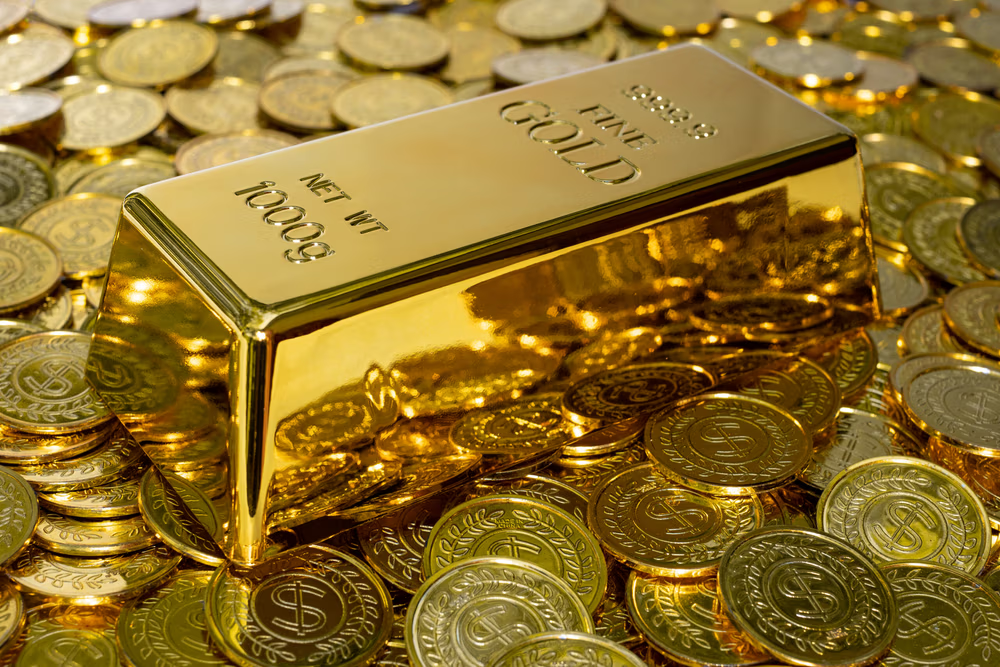Gold prices have surged to new highs this week, driven by growing economic uncertainty following the U.S. government’s unexpected move to impose import tariffs on one-kilo gold bars. This decision has intensified trade tensions and added fresh momentum to gold’s historic rally, pushing bullion prices past $3,400 an ounce once again.
One-kilo gold bars, widely traded and central to the COMEX, the world’s largest gold futures market, have long been exempt from such duties. These bars, often sourced from Switzerland, are now facing tariffs as high as 39%, a development that threatens to disrupt the delicate global gold supply chain.
Switzerland, the world’s leading gold refiner and exporter, ships billions of dollars’ worth of gold annually to the U.S., with $61.5 billion worth crossing the Atlantic last year alone. Nearly two-fifths of that volume could now be subject to the new tariff regime.
This tariff classification contrasts sharply with previous expectations that gold bars would be excluded from trade war measures. The ruling effectively erases a vital exemption and imposes a costly barrier on the bullion trade between Switzerland and the United States. Swiss refiners are already responding by slowing or halting shipments, and bullion traders are scrambling to adjust as markets brace for structural changes.
Impact on Prices and Market Dynamics
Despite these tariffs, gold prices have surged amid rising economic uncertainty fueled by trade tensions. Spot gold recently climbed above $3,400 an ounce, recovering from $3,372 within 24 hours, and December COMEX futures jumped 1% to nearly $3,488 an ounce. Gold is poised for weekly gains, supported by safe-haven demand amid escalating tariffs and geopolitical unease.
In the UAE, the price of 22-karat gold stands at AED 378.75 per gram, the highest since late July. However, market sources assure that shoppers and retailers in the Gulf region need not worry about the tariffs on one-kilo bars impacting local prices significantly.
The tariffs come amid a broader environment where central banks, particularly China’s, continue to accumulate gold reserves. The People’s Bank of China added 60,000 troy ounces to its holdings in July alone, marking the ninth consecutive month of increases, underscoring gold’s enduring role as a hedge against economic instability.
At the same time, a weakening U.S. dollar—pressured by market expectations of Federal Reserve interest rate cuts—has further supported higher gold prices. This combination of factors is creating a powerful environment for gold, which remains one of the most trusted assets amid global uncertainty.
The Future of Gold Trade
This tariff decision signals more than just a trade dispute; it’s a potential reshaping of the global bullion market’s logistics and economics. The traditional trade route—from London’s 400-ounce bars refined and resized in Switzerland into kilo bars shipped to New York—is under strain, threatening to increase costs and complicate supply chains.
The stakes are high: gold is not only a commodity but a symbol of financial trust and security worldwide. Tariffs on such a fundamental asset raise questions about the stability of global finance and the risks of politicizing traditionally apolitical safe havens.
For now, the one-kilo gold bar stands as the unexpected frontline in a global economic standoff. Traders and refiners are recalibrating amid these shifting sands, and the market is likely to experience increased premiums, wider arbitrage opportunities, and continued strong demand as uncertainty reigns.






